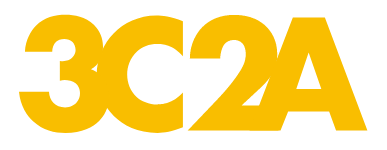-
- Previous College:
- Merritt
Bio
Joe Leonard Morgan (born September 19, 1943) played with
the Houston Astros until they traded Morgan to the Cincinnati Reds
as part of a blockbuster multi-player deal on November 29, 1971,
announced at baseball's winter meetings. While the Astros got
power-hitting Lee May, the deal is now considered one of the most
one-sided trades in baseball history. To this day it is considered
an epoch-making deal for Cincinnati and one of the worst trades in
Astros' history. Included in the deal to the Reds were CCsar
Gerrnimo (who became their regular center fielder) and Jack
Billingham, who soon joined the Reds pitching rotation as a leading
starter, veteran infielder Dennis Menke, and journeyman outfielder
Ed Armbrister. In addition to May, all star second baseman Tommy
Helms and outfielder/pinch hitter Jimmy Stewart went to the Astros.
The deal facilitated a shift in Reds team philosophy towards speed
over power, with Morgan and outfielder Pete Rose now two key
figures batting back-to-back. Morgan added unusual home run power
(at that time) for a second baseman to outstanding speed on the
basepaths and excellent defense.
After joining The Big Red Machine, Morgan's career reached a
new level. This includes eight consecutive All-Star Game
appearances (197221979) to go along with his 1966 and 1970
appearances with Houston.
Morgan, along with teammates Pete Rose, Johnny Bench, Tony
PPrez, and Dave Concepciin, led the Reds to consecutive
championships in the World Series. He drove in the winning run in
Game 7 of the 1975 World Series, now ranked as one of the greatest
World Series of all time. Morgan was also the National League MVP
in 1975 and 1976. He was the first second baseman in the history of
the National League to win the MVP back to back.
Morgan was an extremely capable batterrespecially in clutch
situations. While his lifetime average was only .271, he hit
between .288 and .327 during his peak years with the Reds.
Additionally, he drew many walks, resulting in an excellent .392
on-base percentage. He also hit 268 home runs to go with 449
doubles and 96 triples, excellent power for a middle infielder of
his era, and was considered by some the finest base stealer of his
generation (689 steals at greater than 80% success rate). Besides
his prowess at the plate and on the bases, Morgan was an
exceptional infielder, winning the Gold Glove Award in consecutive
years from 1972 to 1976.
After his career ended, he was inducted into the Cincinnati
Reds Hall of Fame in 1987, and his jersey number 8 was retired. He
was honored by the Reds by throwing out the 1st pitch at the Reds
1st spring training game at Goodyear Ballpark (in Arizona) on March
5, 2010.
In 1980, he returned to Houston to help the young Astros win
the NL West. The Astros then lost the National League Championship
Series to the Philadelphia Phillies. Morgan went to the San
Francisco Giants for the next two seasons. His home run in the last
game of the 1982 season eliminated the Dodgers from the division
race. He won the 1982 Willie Mac Award for his spirit and
leadership. He then went to the Phillies, where he rejoined
ex-teammates Pete Rose and Tony PPrez. After losing to the
Baltimore Orioles in the World Series, Morgan finished his career
with the Oakland Athletics.
Morgan was also a member of ESPN's lead baseball broadcast
team alongside Jon Miller and Orel Hershiser. Besides teaming with
Miller for Sunday Night Baseball telecasts, Morgan has also teamed
with Miller for League Championship Series and World Series
broadcasts on ESPN Radio. In 2006, he called the Little League
World Series Championship with Brent Musburger and Orel Hershiser
on ABC, replacing the recently fired Harold Reynolds. During the
2006 MLB playoffs, the network had Morgan, their lead baseball
analyst, pull double duty by calling the first half of the
MetssDodgers playoff game at Shea Stadium before traveling across
town to call the YankeessTigers night game at Yankee
Stadium.
He was also a broadcaster in the MLB 2K series from 2K
Sports. Although Joe Morgan's partnership with Jon Miller began in
1990, it was not the first time that Morgan associated himself with
ESPN, as from 1985 to 1988, Morgan called college baseball games
for ESPN.
In his time at ESPN, Morgan had been a vocal critic of
statistics-based analysis of baseball, sometimes called
sabermetrics. Michael Lewis' book Moneyball, which describes Billy
Beane's sabermetric-influenced approach to running the Oakland
Athletics, is a particular target of Morgan's criticism. He has
previously refused to read the book reasoning that statistics are
not more helpful than observation.
In 2009, Sports Illustrated's Joe Posnanski spoke about the
perceived disparity between Morgan's celebrated playing style and
his on-air persona:
"The disconnect between Morgan the player and Morgan the
announcer is one that IIm just not sure anyone has figured. Bill
James tells a great story about how one time Jon Miller showed
Morgan Billls New Historical Baseball Abstract, which has Morgan
ranked as the best second baseman of all time, ahead of Rogers
Hornsby. Well, Morgan starts griping that this was ridiculous, that
Hornsby hit .358 in his career, and Morgan never hit .358, and so
on. And there it was, perfectly aligneddJoe Morgan the announcer
arguing against Joe Morgan the player."
In the wake of Joe Morgan deciding to take an official role
with the Cincinnati Reds as a "special advisor to baseball
operations", it was announced on November 8, 2010 that Mr. Morgan
would not be returning for the 2011 season as an announcer on ESPN
Sunday Night Baseball.
On April 21, 2010 it was announced that Morgan is returning
to the Reds in the role of "special advisor to baseball
operations." Morgan will work in both the baseball side and
community outreach side for the Reds.[10]
Morgan stressed to Marty Brennaman during the April 21 radio
broadcast that he will not be involved in trade
decisions.
